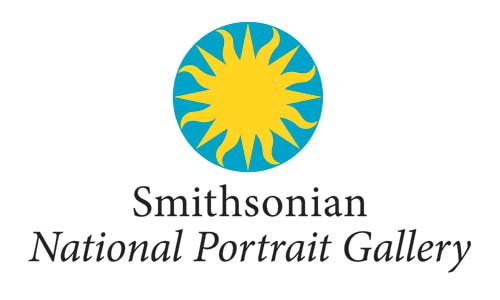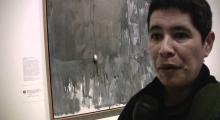Medium
Location
People
Discussion by Jonathan Katz, co-curator of “Hide/Seek” and Chair of the Visual Studies Doctoral Program at SUNY-Buffalo.
Sexuality was a complicated issue for Georgia O’ Keeffe, both in her life and in her art. She famously denied that her landscapes or flower paintings were allegories of the female form, yet their lineage is obviously physical. While these paintings lushly anthropomorphized women, O’ Keeffe also worked in a style that was dry, austere, and forbidding: she filled her landscapes of the desert Southwest with an abundance of horns and antlers. In both cases, she was intent on asserting her own vision of the female body-camouflaged in a way that provides protective coloration. In Goat’s Horn with Red, the phallic horn is viewed from within, making a void that wraps protectively around the lake of blue in the middle. The blue is a life-giving sanctuary in the midst of a forbidding landscape. But, considered as the amniotic fluid of the womb, it represents womanhood, protected from the world of men.
"Hide/Seek: Difference and Desire in American Portraiture" was on view at the National Portrait Gallery, Smithsonian Institution, from October 30 through February 13, 2011.
For more on the exhibit, visit the exhibit website at: http://npg.si.edu/exhibit/hideseek .
Georgia O’ Keeffe (1887-1986) Pastel on paperboard, 1945 Hirshhorn Museum and Sculpture Garden, Smithsonian Institution, Washington, D.C.; gift of Joseph H. Hirshhorn, 1972
Comments
Brought to you by NPG






